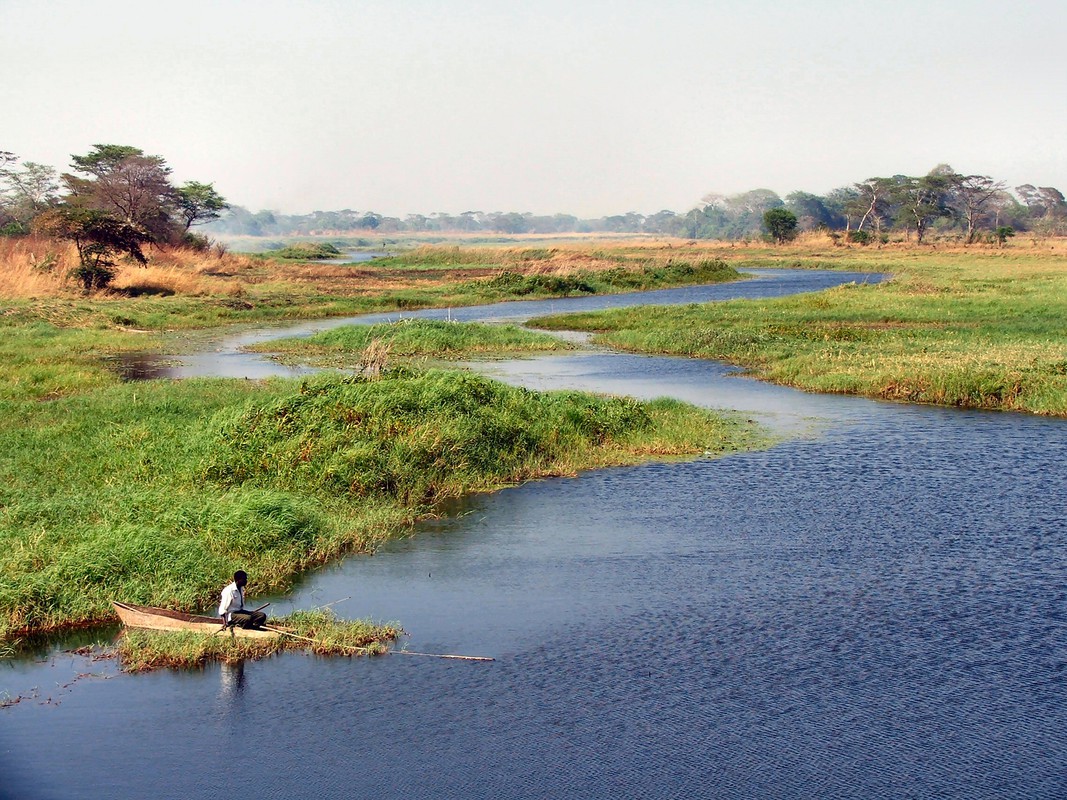Rainforests grab the headlines, but with 87% of wetlands lost globally, it is time to nurture these immensely productive and diverse ecosystems.
by Matthew McCartney and Chris Dickens

In the past wetlands – marshes, fens, peatlands, flooded forests, mangroves – were widely considered unproductive wastelands full of disease and danger. In a world where the human instinct was to try and tame, the only good wetland was a drained wetland.
Today, however we have evolved to understand that natural ecosystems are an essential component of sustainable societies and that biodiversity is critical for human well-being. We need to nurture nature, including wetlands, to survive and thrive.
But even as this realization dawns, biodiversity is undergoing a dangerous decline, species extinction rates are accelerating and wetlands are fast disappearing.
The value of wetlands
Wetlands are some of the planet’s most productive ecosystems, supporting immense biodiversity. These relatively small areas are often home to hundreds, if not thousands, of individual plant, fish, bird, reptile and mammal species – a natural richness comparable to that of rainforests and coral reefs.
But unlike burning rainforests, the decline of wetlands globally receives relatively little attention. This despite the fact that we lose wetlands three times faster than natural forests.
Our lack of attention is a mistake because wetlands benefit people in a large number of ways. These benefits, so called ‘ecosystem services’, are a direct function of biodiversity. They are essential to our survival and are of huge economic value. Water purification and waste treatment, flood control and storm protection, carbon storage and sequestration, fisheries and recreational opportunities provided by wetlands are globally valued at US$47 trillion annually.
Wetlands are also important for mitigation and adaptation to climate change. Mangroves and coastal wetlands sequester carbon, while peatlands are huge carbon stores that need to be preserved to prevent the release of greenhouse gasses into the atmosphere. Overall, wetlands cover 6% of the Earth’s surface, but ‘lock in’ significant amounts of carbon.
Some wetlands regulate water flows, reducing flooding. Others may provide water during dry periods and droughts. Wetlands may also provide vital natural resources such as food and building materials in the aftermath of natural calamities when governments often struggle to support communities. Not all wetlands will provide all of these benefits, but they each provide their own unique set of opportunities to society and thus contribute to the resilience of communities, particularly in the face of climate change. Indeed, the services provided by wetlands are considered critical for achieving the UN Sustainable Development Goals (SDGs).
Nurturing nature
Despite their immense value, we are losing wetlands at an alarming rate. Up to 87% of global wetlands have been lost since 1700, with the largest proportion lost during the 20th and early 21st centuries. Agriculture, urban and industrial development, introduction of invasive species, pollution and over-exploitation all contribute to ongoing degradation of wetlands.
So what can be done to protect wetlands? There is no single solution, but the Ramsar Convention, an international treaty for the conservation and sustainable use of wetlands, provides guidance on the wise use of wetlands. ‘Wise use’ was a highly progressive term when coined by the Convention’s founders in 1973, long before sustainable development was mainstream, and it continues to be useful today.
The central idea behind wise use is that all the benefits wetlands provide must be considered and incorporated when people make decisions that affect them.
Examples of ways to facilitate wise use of wetlands include when the city of Colombo, capital of Sri Lanka, recognized that wetlands help prevent flooding and therefore prioritized the protection of these urban spaces for flood defense and other benefits. India provides another example, with the development of guidelines on the preservation of wetlands to protect the role they play in the provision of food, fish and other goods to many poor communities. In East Africa, researchers have worked with communities to develop approaches to help sustainably manage wetlands in a way that improves food security and enhances livelihoods, a step on the way towards wise use.
Still, despite all the efforts of the Ramsar Convention and other initiatives, wetland losses continue apace. This continuous loss is an under-appreciated risk to people’s well-being, flourishing societies and, ultimately, human survival.
A new relationship with nature
Our relationship with nature is complex and evolving. Past perceptions of nature largely as a threat are understandable, but now we realize that we damage nature and degrade wetlands at our peril.
On this World Wetlands Day 2020, we call on fellow scientists, on policy makers and agents of change, to increase awareness on the importance of wetlands and to help find ways to motivate wise use. The imperative now is to nurture, not battle, nature. Protecting wetlands is vital for the rich biodiversity they support and for our own survival.
***
Matthew McCartney is the Research Group Leader for Sustainable Infrastructure and Ecosystems and Chris Dickens a principal water scientist, both at the International Water Management Institute (IWMI) working with support from the CGIAR Research Program on Water, Land and Ecosystems (WLE).
***
Originally published as a commentary on Mongabay for World Wetlands Day

